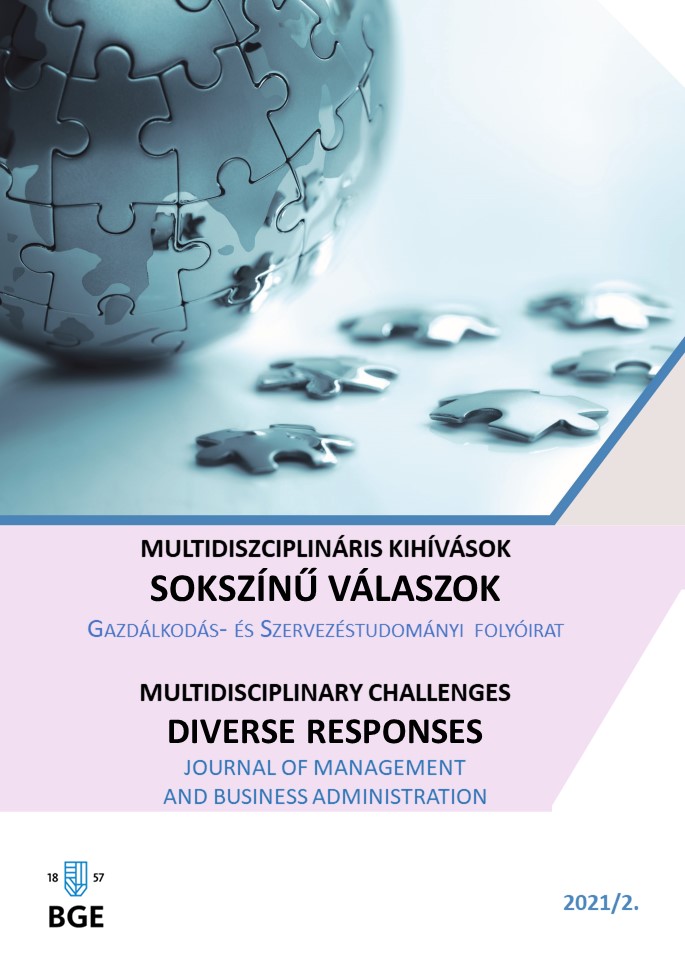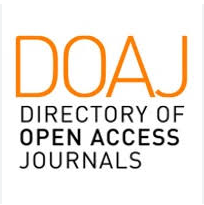Mother Russia, Step-Mother Hungary: New Home for Russian Migrants
Abstract
The issue of migration is not new, but clearly requires renewed attention, especially when it comes to the national interest and the identification and integration of future migrants. This paper describes some of the problems of modern Russian emigration and offers an analysis, in the context of modern realities, as to why Russians choose to emigrate to Hungary.
This essay explores the real causes of “push” and “pull” factors and the ability or readiness of Russians who live in Hungary to be a part of the society. Additionally, considering the globalisation process, it examines circular and return migration as a new ‘hybrid’ form of migration in which the final destination cannot be assured.
The study uses the systematic methodology of grounded theory and interview and is a part of the dissertation. This research can be useful for either migration researchers or policymakers.
References
Aleksenko, A.D. (2020). Образы русского мира в лирике поэта-эмигранта Г.В. Голохвастова [Images of the Russian world in the lyrics of the poet-emigrant G.V. Golokhvastova]. Source: https://www.ncfu.ru/export/uploads/doc/Dissertaciya-Aleksenko-A.D.pdf
Apetroe, A. (2016). The european migration crisis. Which consequences affecting the stability of the European Union? Retrieved from: https://www.researchgate.net/publication/326925411_The_european_migration_crisis_Which_consequences_affecting_the_stability_of_the_European_Union
Bara, A., Di Bartolomeo, A., Brunarska, Z., Makaryan, S., Mananashvili, S., & Weinar, A. (2012). Циркулярная Миграция В Странах Восточного Партнерства [Circular Migration in the Eastern Partnership Countries]. European University Institute Robert Schuman Centre for Advanced Studies. https://cadmus.eui.eu/bitstream/handle/1814/24877/CARIM-East_RR-2012-35.pdf?sequence=1&isAllowed=y
BBC News. (2012, December 26). Пять волн российской эмиграции [Five waves of Russian emigration]. https://www.bbc.com/russian/russia/2012/12/121128_russia_emigration_waves
Beyer, T. R. (2013). Third and Fourth Waves of Russophone Immigration to the USA. Academic Commons. https://academiccommons.columbia.edu/doi/10.7916/D8V69T1N
Bushuev, М. (2019, January 17). “Россию все чаще покидают образованные и молодые” [More and more educated and young people leave Russia]
Bustamante, J. A. (2002). Migración Internacional y Derechos Humanos. Serie Doctrina Juridica, No. 94. Instituto de Investigatciones Juridicas. Available from: http://biblio.juridicas.unam.mx/libros/1/296/1.pdf
Center for Strategic Research “Human Capital”. (2017). Демографические Вызовы России [Demographic Challenges of Russia]. Source: https://www.csr.ru/upload/iblock/704/704bb820549b28a50039d37b02efccd9.pdf
Dayton-Johnson, J. (2007, October). Circular Migration: What Gains for Development ? OECD Development Centre. https://www.iom.int/jahia/webdav/shared/shared/mainsite/microsites/IDM/workshops/global_labour_mobility_0809102007/presentations/presentation_daytonjohnson.pdf
Domingues Dos Santos, M. & Postel-Vinay, F. (2003). Migration as a source of growth: The perspective of a developing country. Journal of Population Economics, 16, 161-175. https://doi.org/10.1007/s001480100117.
Dustmann, C. & Kirchkamp, O. (2001). The Optimal Migration Duration and Activity Choice After Re-migration. Journal of Development Economics, 67, 351-372. https://doi.org/10.1016/S0304-3878(01)00193-6.
European Commission (2007): Communication from the Commission to the European Parliament, the Council, the European Economic and Social Committee and the Committee of the Regions on circular migration and mobility partnerships between the European Union and third countries. COM(2007) 248 final. Brussels. Available from: http://eur‐lex.europa.eu/legal‐content/EN/TXT/?uri=celex:52007DC0248
European Migration Network. (2011). Temporary and Circular Migration: empirical evidence, current policy practice and future options in EU Member States. Publications Office of the European Union: Luxembourg. Available from: http://ec.europa.eu/dgs/home‐affairs/what‐we‐ do/networks/european_migration_network/reports/docs/emn‐studies/circular‐ migration/0a_emn_synthesis_report_temporary__circular_migration_final_sept_2011_en.pdf
Fargues, P. (2008). Circular Migration: Is it relevant for the South and East of the Mediterranean?, [Migration Policy Centre], [CARIM-South], CARIM Analytic and Synthetic Notes, 2008/40 http://apps.eui.eu/Personal/fargues/Documents/CARIM_AS&N_2008_40.pdf
Haque, N.U. & Kim, S.-J. (1995). ‘Human Capital Flight’: Impact of Migration on Income and Growth. IMF Staff Papers, 42(3), 577–607. International Monetary Fund, Washington, DC.
Hungarian Central Statistical Office. (2022). Foreign citizens residing in Hungary by country of citizenship and sex, 1 January*. Retrieved from: https://www.ksh.hu/stadat_files/nep/en/nep0023.html
International Organisation for Migration. (2011). Glossary on Migration (Richard Perruchoud and Jillyanne Redpath-Cross, eds. ed., Vol. 2). https://www.corteidh.or.cr/sitios/observaciones/11/anexo5.pdf
Johnson, H. (1967). Some Economic Aspects of the Brain Drain. Pakistan Development Review, 7(3), 379–411.
Konsul’tant Plyus. Nadezhnaya pravovaya podderzhka. (2020, July). Федеральный закон от 31.05.2002 N 62-ФЗ (ред. от 13.07.2020) “О гражданстве Российской Федерации” [Federal Law of May 31, 2002 N 62-FZ (as amended on July 13, 2020) “On Citizenship of the Russian Federation”]. Consultant.ru. http://www.consultant.ru/document/cons_doc_LAW_36927/85ccbff71854900d7c7a24c37ad43f0ab2fc3dfa/
Lundborg P. (2006) Growth Effects of the Brain Drain. In: Langhammer R.J., Foders F. (eds) Labor Mobility and the World Economy. Springer, Berlin, Heidelberg. https://doi.org/10.1007/978-3-540-31045-7_22
Massey, D.S., Arango, J., Hugo,G., Kouaouci, A., Pellegrino, A. and Taylor, J.E. (1993), ‘Theories of International Migration at the End of the Millenium, Oxford: Clarendon Press.
Matveeva, U.V. (2017). Русская литература зарубежья: три волны эмиграции ХХ века [Russian Literature Abroad: Three Waves of Emigration of the 20th Century]. Ekaterinburg, Russia: Ural University Publishing House.
Medvedev, S. (2019, March 7). Пятая волна [The Fifth Way]. Радио Свобода. https://www.svoboda.org/a/29805879.html
Migration Research Institute. (2016). Europe’s migrant crisis - a comprehensive analysis.
Miyagiwa, K. (1991). Scale Economics in Education and the “Brain Drain” Problem. International Economics Review, 32(3), 743 – 759.
O’Neil, K. (2003). Discussion on migration and development: Using remittances and circular migration as drivers of development. Summary Report. Migration Policy Institute. Available from: http://www.migrationpolicy.org/research/discussion‐migration‐and‐development‐using‐remittances‐and‐ circular‐migration‐drivers
Palnikov, M. (2007, December 22). Четвертая волна эмиграции [Fourth Wave of Emigration]. Perspektivy. Setevoye Izdaniye Tsentra Issledovaniy i Analitiki Fonda Istoricheskoy Perspektivy. http://www.perspektivy.info/rus/demo/chetvertaja_volna_emigracii_2007-12-22.htm
Panagariya, A. (2006). Migration: Who Gains, Who Loses. Brookings Trade Forum, 229-244. Retrieved April 14, 2021, from http://www.jstor.org/stable/25063210
Posel, D. & Marx, C. (2013). Circular Migration: A View from Destination Households in Two Urban Informal Settlements in South Africa. Development Studies, Vol. 49, Issue 6. https://doi.org/10.1080/00220388.2013.766717
Ryazantsev, S. & Pis'Mennaya, E. (2013). Emigration of scientists from Russia: “Circulation” or “brain-drain”. Sot͡siologicheskie issledovanii͡a. 24-35.
Schneider, J. & Parusel, B. (2015). Circular Migration between Fact and Fiction – Evidence from Germany. European Journal of Migration and Law, Vol. 17, Issue 2‐3, 184‐209.
Stark, O., Helmenstein C., and Prskawetz A. (1997). A Brain Gain with a Brain Drain. Economics Letters, 55(2), 227–34.
TASS. (2017, November 8). Эксперт: волны эмиграции из России в США прошли [Expert: waves of emigration from Russia to the USA passed]. TASS. https://tass.ru/obschestvo/4712691
UN DESA. (2019). International Migrant Stock. Retrieved from: https://www.un.org/en/development/desa/population/migration/data/estimates2/estimates19.asp
UNECE. (2011, November). Статистика международной миграции Практическое руководство для стран Восточной Европы и Центральной Азии [International Migration Statistics A Practical Guide for Eastern Europe and Central Asia]. https://unece.org/fileadmin/DAM/stats/publications/RUS_International_Migration_Statistics_Practical_Guide.pdf
United Nations Economic Comission for Europe (UNECE). (2016, January). Defining and Measuring Circular Migration. Final report of the Task Force on Measuring Circular Migration. https://unece.org/fileadmin/DAM/stats/documents/ece/ces/bur/2016/February/14-Add1_Circular_migration.pdf
Vladimirov, V., Baranov, Е., & Samus, Е. (2018, September 10). Эмиграция из России - рекордная с советских времен. [Emigration from Russia - record-breaking since Soviet times]. GOLOS AMERIKI. https://www.golosameriki.com/a/russian-emigration-grows/4377299.html
Wong, K. & Yip C.K. (1999). Education, Economics and Brain Drain. Journal of Economics, Dynamics and Control, 23 (5-6), 699 -726


























